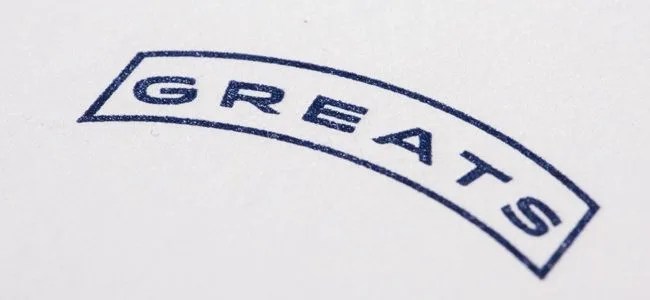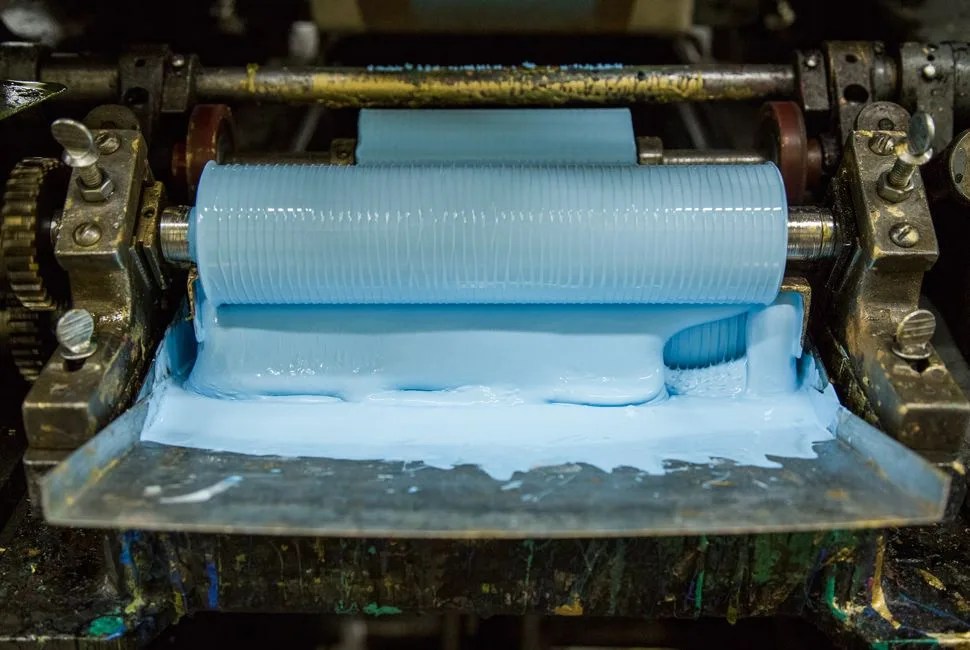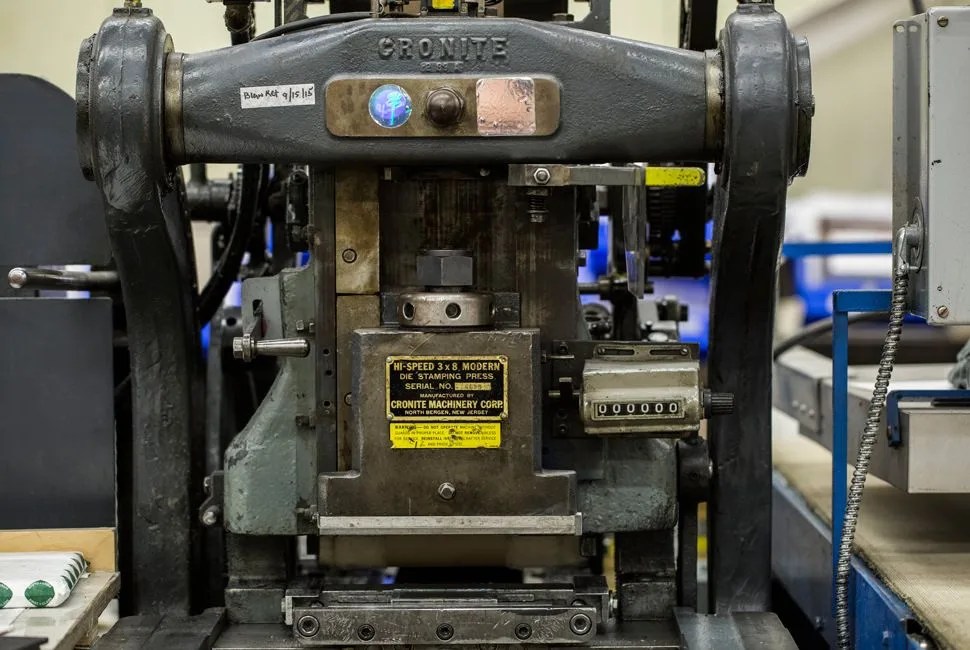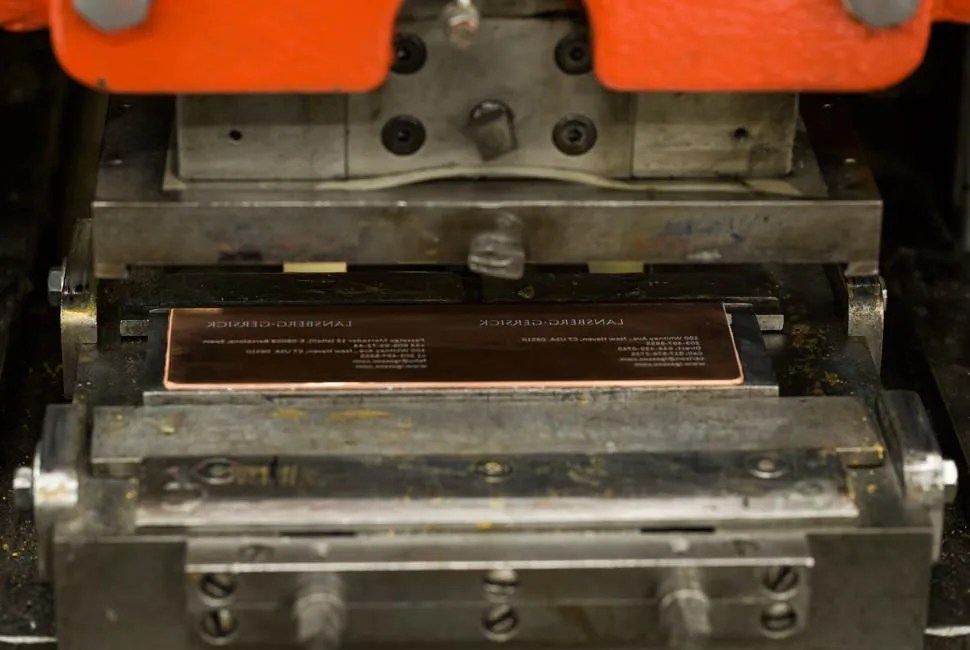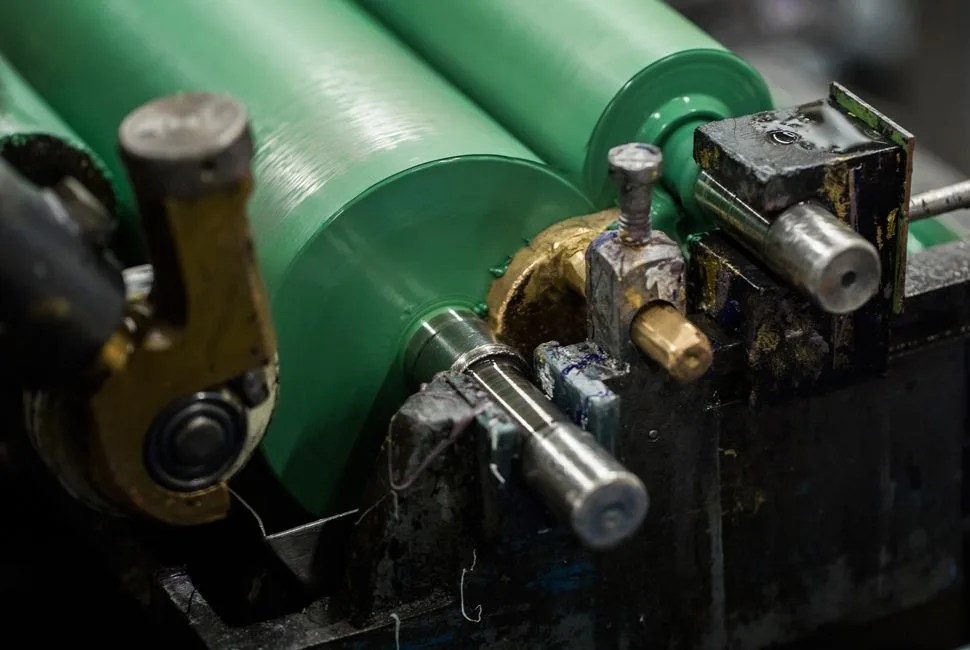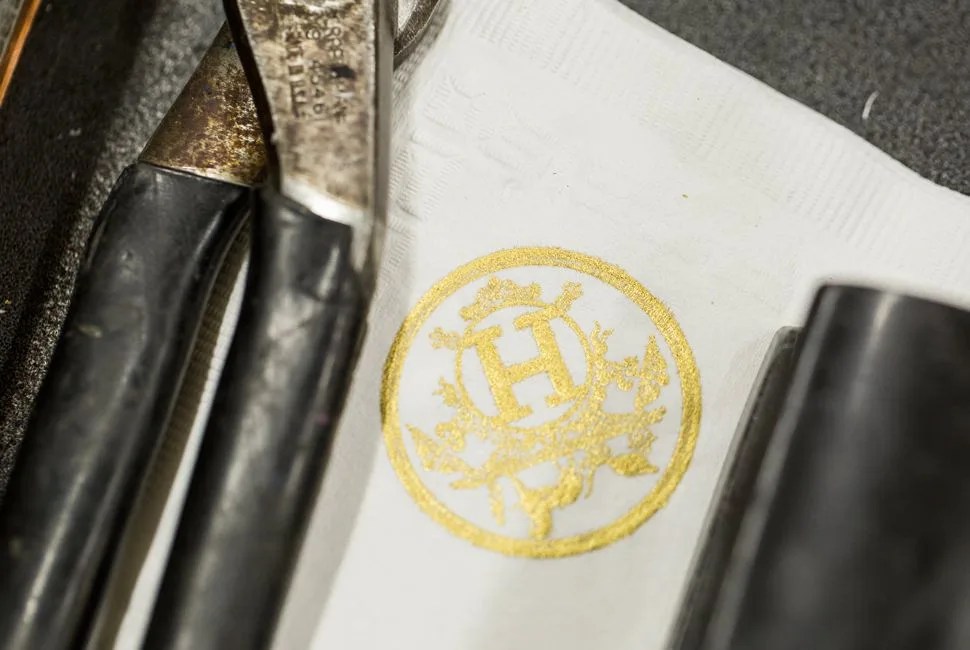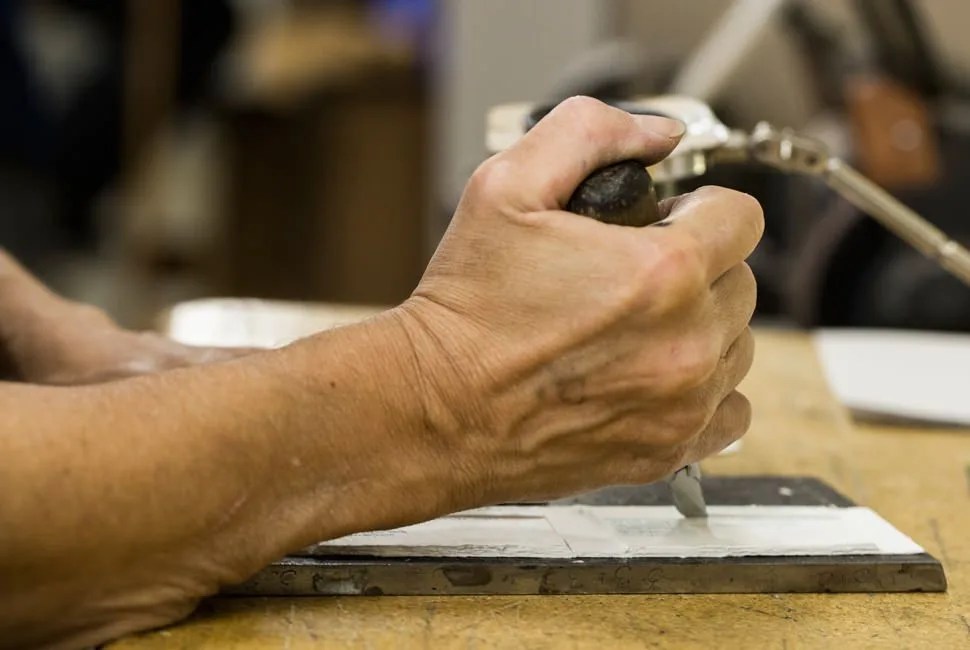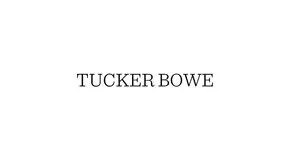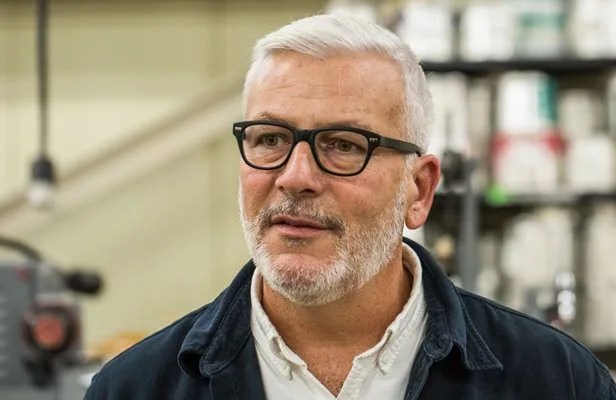After a handshake and salutation, a meeting between businessmen ends with the exchange of cards. It’s a little antiquated; there are many other ways to find someone’s contact information in 2015. Yet, even today, a business card provides something that email, Twitter, LinkedIn, Facebook or Instagram cannot: a tangible representation of a person’s business. They are also, as Ted Harrington, President of Terrapin Stationers, points out, an extension of someone’s personal style.
Terrapin Stationers has been making engraved stationary, note cards and letters for over 105 years. In 2014 they relocated from Manhattan to New Haven, Connecticut. Today, Harrington estimates they make 100,000 sets of business cards a year. It’s a number, he admits, that isn’t tremendous. But the business cards Terrapin makes are what Harrington calls luxury — for the “one percent of the one percent.”
In the back room of Terrapin’s manufacturing facility, Harrington empties a box of business cards on the table. He explains that when somebody is handed a business card, and even before reading it, the first thing that person does is feel it. They feel its weight, size and, most importantly, the different processes that went into making the card, of which there are three: traditional offset printed, engraved or blind embossed, and letterpress.
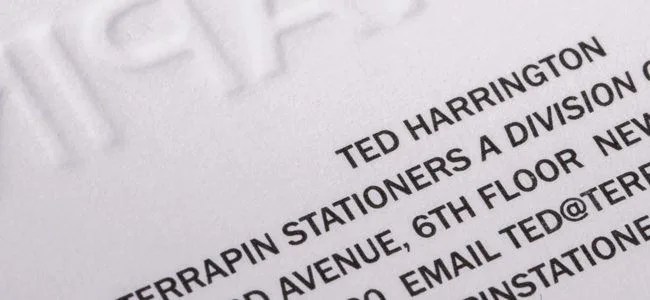
An offset printed (also known as lithographed) business card is flat printed and doesn’t leave any impression on the card’s back. “It’s probably the most budget-friendly business card,” says Harrington. “They’re great for companies who are ordering a ton of business cards.” They’re simple, but when printed on a good card stock, Harrington says they make beautiful, clean cards.
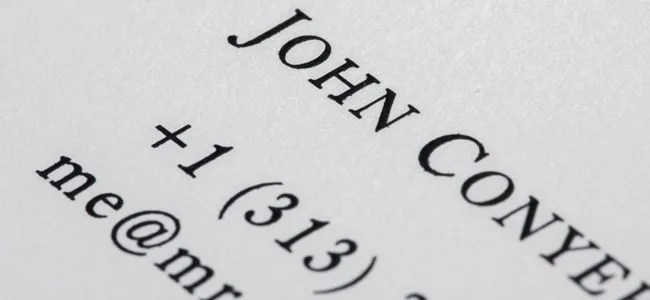
An engraved business card has raised type. They’re made when a negative copper plate, which is etched and coated with ink, then stamped down on top of the business card, leaving a positive impression. The process, which has been around since the medieval era, involves meticulously hand etching typesets into copper plates.

